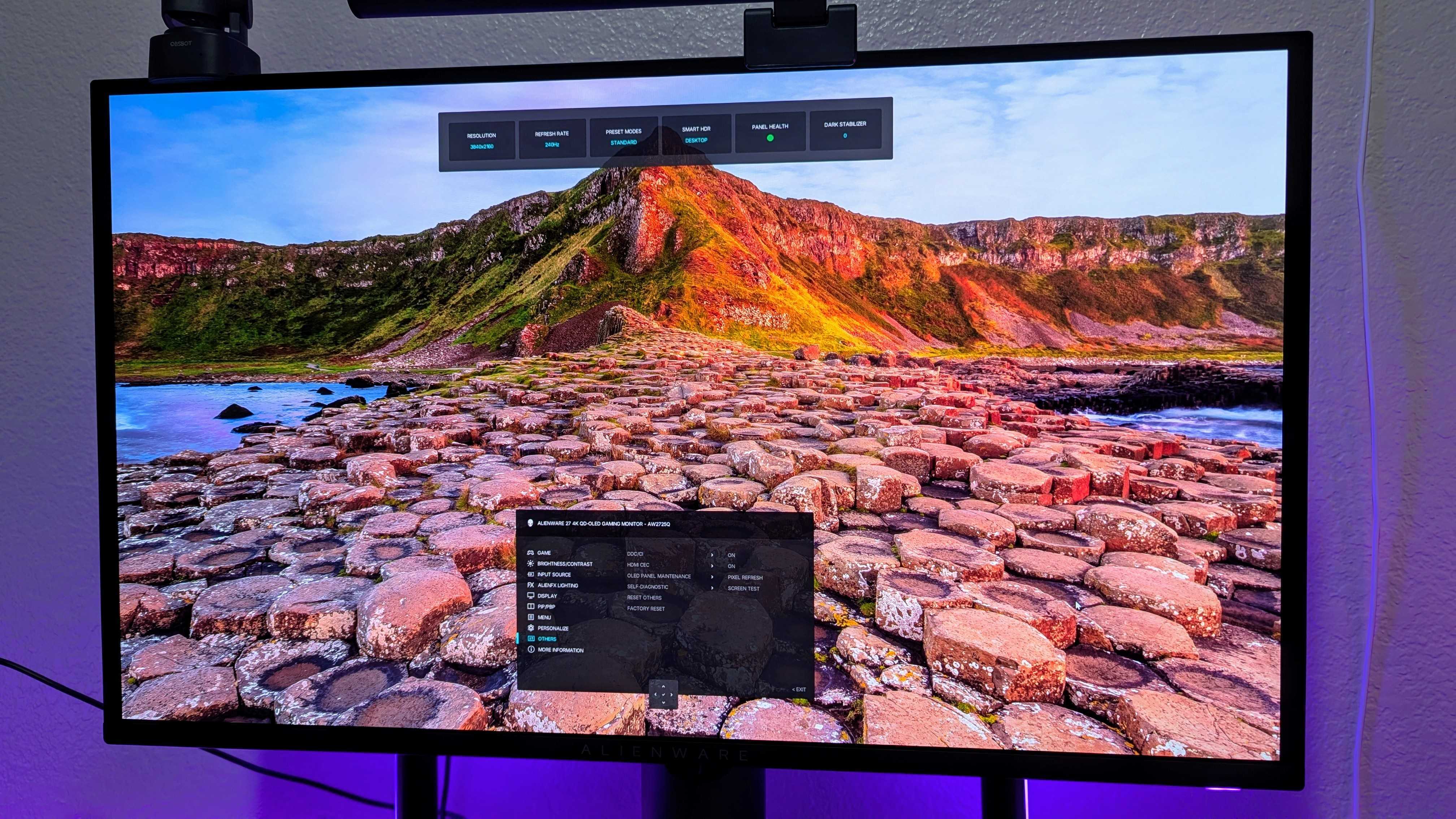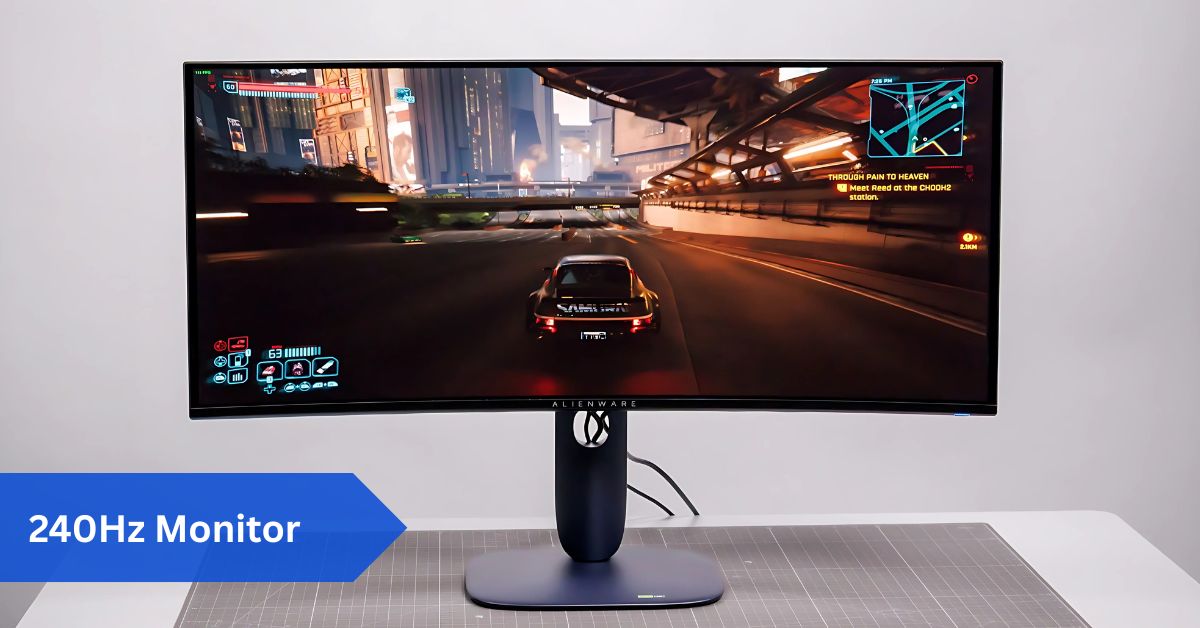Introduction:
Technology moves fast, but few innovations have transformed digital experiences as significantly as high-refresh-rate monitors. A few years ago, most people thought 60Hz was “good enough.” Then came 120Hz, 144Hz, and 165Hz, which made competitive gamers swear they could never go back. Now, 240Hz monitors are stealing the spotlight, promising ultra-smooth visuals, lightning-fast responsiveness, and an experience so seamless that your old display suddenly feels outdated.
A 240Hz monitor delivers lightning-fast visuals and ultra-smooth motion, making it ideal for competitive gamers, content creators, and professionals. Compared to 60Hz or 144Hz, it offers sharper motion clarity and minimal input lag, ensuring top-tier performance and a seamless experience.
But what does 240Hz really mean? Do you actually need it? Is it worth upgrading from 144Hz? And how do these monitors compare in 2025 to newer 360Hz and even 500Hz options?
This ultimate guide will break it all down for you—in simple terms, with practical advice, and plenty of real-world comparisons. Whether you’re a gamer, content creator, or professional who just wants a smoother workflow, this article will help you decide if 240Hz is your next big upgrade.
What Does 240Hz Really Mean?
At its core, a monitor’s refresh rate tells you how many times the screen refreshes per second.
- 60Hz = 60 frames per second
- 144Hz = 144 frames per second
- 240Hz = 240 frames per second
So, when you upgrade to a 240Hz monitor, your display is capable of showing four times as many frames per second compared to a standard 60Hz monitor.
Imagine it as browsing through a photo book. At 60 flips per second, you’ll see movement, but it’ll look a little choppy. At 240 flips per second, everything looks so smooth that it feels like you’re watching real life through a window.
Why Refresh Rate Matters More Than You Think:
A higher refresh rate doesn’t just make games look prettier—it changes how you feel while using your PC. Here’s why it matters:
- Motion Clarity – Movements look sharp, with less blur or trailing.
- Faster Response – Your actions sync almost instantly with what you see.
- Reduced Eye Strain – Smoother visuals are easier on your eyes during long sessions.
- Competitive Advantage – In esports, where milliseconds decide outcomes, every frame counts.
It’s like driving: once you’ve experienced a luxury car that handles smoothly, going back to a regular car feels rough and sluggish.
240Hz vs Other Refresh Rates: Breaking Down the Difference:
Not all jumps in refresh rates feel the same. Here’s how they compare:
- 60Hz → 144Hz – A massive leap. You’ll immediately notice smoother motion and responsiveness. It feels like switching from standard TV to high-definition.
- 144Hz → 240Hz – A subtler but still meaningful upgrade. Think of it as going from a solid sports car to a race-tuned supercar. The difference is smaller, but for enthusiasts, it’s worth it.
- 240Hz → 360Hz/500Hz – The law of diminishing returns kicks in. Unless you’re a professional esports player competing at the highest level, most people won’t notice a massive difference.
Who Should Buy a 240Hz Monitor?

So, who actually benefits from 240Hz?
- Esports Gamers – Every millisecond counts. If you play Valorant, CS2, Fortnite, or Apex Legends, this upgrade is huge.
- Content Creators – Editing high-FPS footage feels seamless. Motion designers and animators will also notice improvements.
- Tech Enthusiasts – If you’re the kind of person who always wants the best, this is for you.
- Office Professionals – Believe it or not, even spreadsheets and documents scroll more smoothly, reducing fatigue.
Gaming on a 240Hz Monitor: A True Competitive Edge:
Picture this: You’re playing Call of Duty: Warzone. Two players peek around a corner at the same time. Both aim quickly, but the one with a 240Hz monitor sees and reacts slightly faster. That tiny difference—just a few milliseconds—can mean victory.
That’s the real power of 240Hz. It doesn’t just look better; it makes you feel faster, more in control, and more confident in every move. For competitive gamers, that’s priceless.
Beyond Gaming: Everyday Use and Productivity:
Many people assume 240Hz is only useful for gamers. Not true. In fact, professionals and everyday users can enjoy several perks:
- Smooth scrolling in documents and browsers
- Crisper cursor movement while designing or coding
- Reduced blur when multitasking across multiple windows
- Better video playback for 120fps+ content
Even activities such as photo editing or casually scrolling through social media are incredibly smooth. Once you get used to it, going back to 60Hz or even 144Hz feels sluggish.
Technical Side: Response Time, Input Lag, and Overdrive:
A great refresh rate is only part of the story. To get the most out of 240Hz, you also need to understand:
- Response Time – How quickly pixels change color. Lower is better (1ms is ideal).
- Input Lag – The lag time between key press and action display. 240Hz monitors minimize this delay.
- Overdrive – A setting that pushes pixels to change faster, but if set too high, it can cause ghosting.
When all three factors work together, you get the fastest, cleanest visual experience possible.
Hardware Requirements for 240Hz Gaming:
To hit 240fps, you’ll need:
- GPU: At least an RTX 3070/4070 or AMD RX 6800 for 1080p. For 1440p 240Hz, aim for RTX 4080 or RX 7900 XT.
- CPU: A strong processor (Intel i7/i9 or AMD Ryzen 7/9).
- RAM: 16GB minimum, 32GB recommended for heavy multitasking.
- Ports: DisplayPort 1.4 or HDMI 2.1. Older HDMI ports won’t support 240Hz properly.
Without strong hardware, you won’t maximize your monitor’s potential.
Best Use Cases: Where 240Hz Shines the Most:

- First-Person Shooters (FPS): Every movement feels sharper.
- Racing Games: Drifting and cornering feel lifelike.
- Battle Royale Games: Handle chaotic fights more easily.
- MMOs/RTS Games: It feels smoother to manage large armies or raids.
- VR Gaming (future-ready): VR benefits hugely from higher refresh rates.
240Hz Monitors: Market Trends and Future Innovations:
240Hz monitors are no longer niche. Prices have dropped, making them affordable for more gamers and professionals. Some trends include:
- Widespread 1440p 240Hz options – balancing sharp visuals with smooth gameplay.
- OLED 240Hz panels – delivering better colors and contrast alongside fast speeds.
- Portable 240Hz monitors – for laptop gamers and traveling professionals.
- Adaptive Sync improvements – smoother gameplay without tearing or stutter.
As we look to the future, 500Hz monitors are coming for esports professionals, but for regular users, 240Hz is still considered the “golden spot” in terms of value and performance.
Buying Guide: How to Choose the Right 240Hz Monitor:
Here are key things to consider before buying:
- Resolution: 1080p for esports, 1440p for balance, 4K 240Hz (still rare) for the ultimate.
- Panel Type:
- IPS – Best colors and viewing angles.
- TN – Fastest response times but weaker colors.
- VA – Great contrast, decent speed.
- IPS – Best colors and viewing angles.
- Adaptive Sync: G-Sync or FreeSync is essential.
- Size: 24–27 inches is ideal for gaming. Larger ultrawides are great for immersion.
- Price Range: $250–$800, depending on features.
Common Mistakes to Avoid When Buying:
- Buying a 240Hz monitor but using HDMI 1.4 (it caps at 144Hz).
- Pairing it with a weak GPU that can’t hit high frame rates.
- Ignoring ergonomics (height, tilt, rotation).
- Forgetting about color accuracy, if you also do creative work.
240Hz vs 144Hz vs 360Hz: Side-by-Side:
| Feature | 144Hz | 240Hz | 360Hz |
| Smoothness | Very good | Excellent | Slightly better |
| Competitive Edge | Strong | Stronger | Only for pros |
| GPU Requirement | Moderate | High | Extreme |
| Price Range | $200–$400 | $250–$800 | $800+ |
| Best For | Casual & esports | Serious gamers | Esports pros |
The Verdict: Is 240Hz Worth It?

Absolutely—if you care about smoothness, responsiveness, and immersion.
- For competitive gamers, it’s practically a requirement.
- For content creators, it enhances workflow.
- For everyday users, it makes even simple tasks enjoyable.
The jump from 60Hz is life-changing, and from 144Hz it’s still noticeable enough to justify the investment if you want the best.
Conclusion:
The 240Hz monitor is more than just a fancy display upgrade—it’s a complete game-changer. Whether you’re chasing trophies in esports, editing high-FPS videos, or just scrolling smoothly through your inbox, it offers a level of responsiveness and immersion that makes every interaction feel better.
In 2025, with prices dropping and technology improving, 240Hz has become the true sweet spot between performance and value. If you want a display that will serve you well for years to come, this is the monitor to get.
FAQs:
1. Can the human eye see 240Hz?
Yes. While you may not see each frame distinctly, you’ll feel the increased smoothness and reduced motion blur. It’s like jogging versus sprinting—you sense the speed even if you can’t count every step.
2. Do consoles support a 240Hz monitor?
No, current-gen consoles max at 120Hz. 240Hz requires a gaming PC. But future consoles are likely to aim higher as technology advances, especially as game developers push toward more fluid and cinematic experiences.
3. Is 240Hz good for office work?
Yes! Even scrolling through spreadsheets feels smoother. It reduces fatigue during long working sessions by making visuals easier on the eyes, which helps when switching between tabs, documents, and video calls all day.
4. Can laptops run 240Hz?
Yes, many gaming laptops now feature 240Hz displays. Just remember, performance relies heavily on the laptop’s GPU, and pairing it with efficient cooling ensures you actually enjoy those high refresh rates.
5. Should I upgrade from 144Hz to 240Hz?
Suppose you’re competitive, yes. If you’re casual, 144Hz may be enough. The upgrade is most valuable in fast-paced shooters and esports, where every millisecond counts, but it also future-proofs your setup for the next wave of games.
Read More:
The Ultimate Guide to 24-Inch Monitors: Everything You Need to Know
The Ultimate Guide to 144Hz Monitors: Everything You Need to Know
Computer Monitor Shadowing Problem: A Complete Guide
Black Line in Monitor: Causes, Fixes, and Prevention
Shadow on Computer Monitor: Guide to Ghosting, Double Images, and Fuzzy Text
